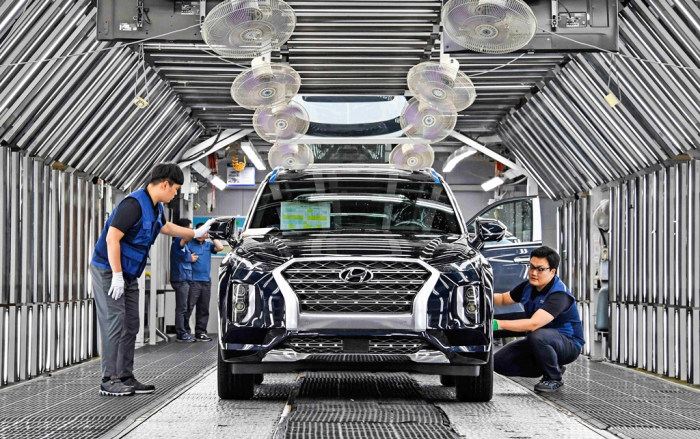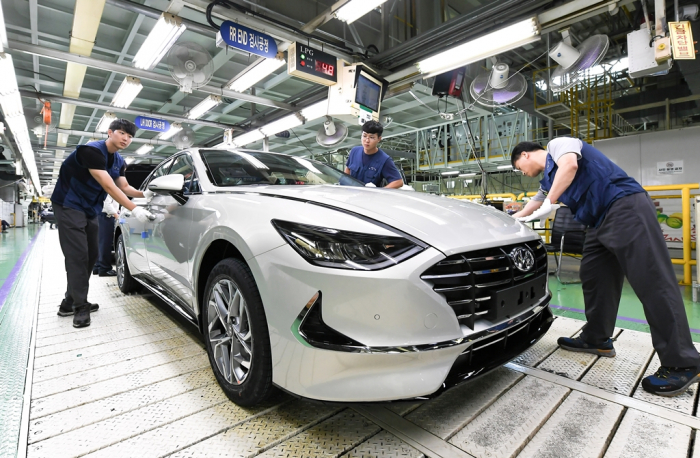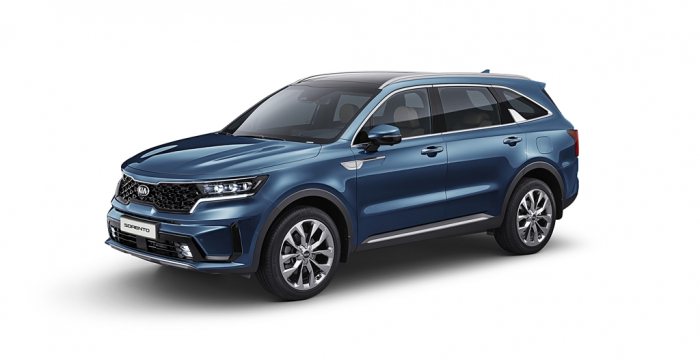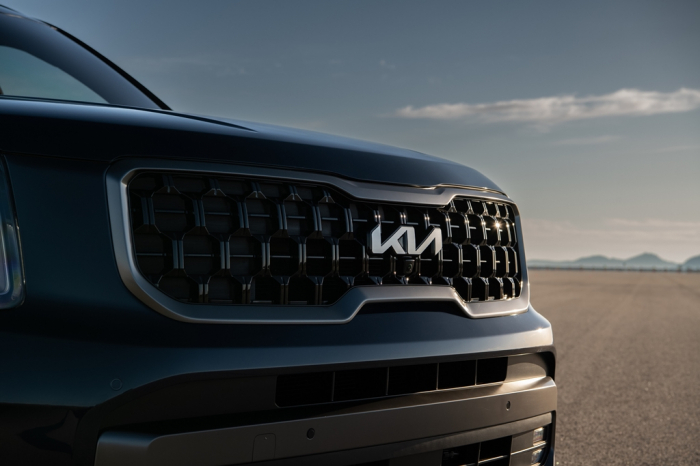Automobiles
Easing car delivery crunch: Boon or bane for Hyundai, Kia?
Higher interest rates and a slowing economy may dampen consumer appetite for new cars
By Jul 06, 2022 (Gmt+09:00)
3
Min read
Most Read
LG Chem to sell water filter business to Glenwood PE for $692 million


KT&G eyes overseas M&A after rejecting activist fund's offer


Mirae Asset to be named Korea Post’s core real estate fund operator


StockX in merger talks with Naver’s online reseller Kream


Meritz backs half of ex-manager’s $210 mn hedge fund



Just like its global peers, Hyundai Motor Co. and Kia Corp. have suffered from the chip shortage that bogged down the entire auto industry for nearly two years from the onset of the pandemic.
With the easing auto chip crunch, the two largest South Korean carmakers are now swiftly working down their order backlog, delivering new cars to their customers faster than before.
The improving situation from the supply side, however, is being offset by weakening demand caused by higher interest rates on car installment plans amid rising inflation and an economic slowdown, which bodes ill for the Korean duo’s earnings in coming quarters.
According to local auto industry officials on Wednesday, buyers of Kia’s large-size K8 sedan now must wait for three months to get their car, compared with six months in June.
For the eight-seater Kia Carnival, the waiting time has been cut in half to five months, while the delivery time for the hybrid Sorento SUV has come down to 17 months from 18 months.
Those who want to buy Hyundai’s Santa Fe SUV must wait for eight months, cut short by one month.

The waiting time had been on the rise for most of the first half of this year since the auto chip shortage slammed the supply chain. But the shorter car deliveries to customers in recent weeks signal a gradual return to pre-pandemic production volume at carmakers, industry officials said.
According to the Korea Automobile Manufacturers Association (KAMA), Hyundai and Kia’s combined car production reached 277,501 units in June, rising steadily since February, when their output was 213,025 units.
Their production volume is expected to increase at a faster rate in the second half.
During a recent conference call with analysts, Kia executives said they expect car production to reach more than 700,000 vehicles in the third and fourth quarters, respectively, up from the higher end of the 600,000-unit level in the second quarter.
“Clearly, we’re witnessing an improvement in the auto chip supply and demand situation,” said a Kia official.
Both Hyundai and Kia said they are also seeking to forge long-term contracts with auto chipmakers such as Japan’s Renesas Electronics Corp. for stable chip procurement.

AUTO PRODUCTION TO OUTPACE RETAIL SALES
While Hyundai and Kia are increasing their car production, retail sales are showing signs of easing, particularly in the domestic market.
According to industry officials, Kia recently began to offer dealers higher incentives for auto sales as customers are increasingly reluctant to buy new cars given worsening economic conditions.
Kia’s Korean sales have steadily increased since the start of the year to 50,000 units in April. But the company’s local sales fell for two straight months to 45,663 units in May and down further to 45,110 cars in June.
Credit Finance Association data showed the annual interest rate at which a Kia Carnival buyer must pay for a car installment plan has risen to a high of 8% in the second quarter from 3.86% in the first quarter.

S&P credit analyst Park Joon-hong said dwindling consumption is one of the biggest risks to the Korean economy this year and next.
“Weak demand for durable goods such as electronics and automobiles will hurt companies’ earnings for the rest of the year,” he said.
Industry watchers earlier said Hyundai and Kia will likely post their highest-ever profit for the second quarter and the entire year on the back of the popularity of their cars overseas despite the industry’s dim outlook amid higher costs.
Write to Han-Shin Park and Hyung-Kyu Kim at phs@hankyung.com
In-Soo Nam edited this article.
More to Read
-
 Corporate investmentHyundai Motor to launch investment affiliate in US for further growth
Corporate investmentHyundai Motor to launch investment affiliate in US for further growthJul 01, 2022 (Gmt+09:00)
2 Min read -
 AutomobilesHyundai, Kia set for record profit with lower incentives than Toyota
AutomobilesHyundai, Kia set for record profit with lower incentives than ToyotaJun 27, 2022 (Gmt+09:00)
3 Min read
Comment 0
LOG IN


